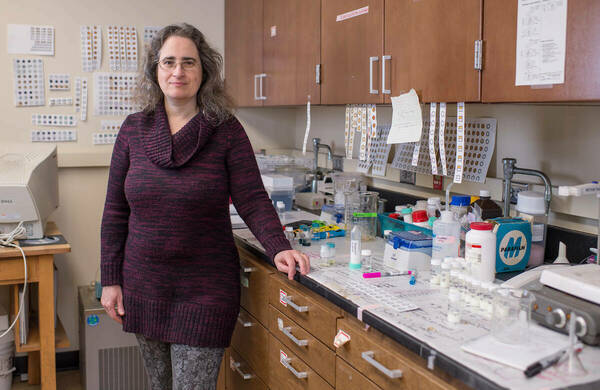
The Paper Analytical Devices created in the laboratory of Marya Lieberman, professor in the Department of Chemistry and Biochemistry at the University of Notre Dame, are effective for detecting falsified versions of several different medications, according to a new report by the United States Pharmacopeia’s (USP’s) Technology Review program.
The devices, known as PADs, change color in response to the presence of different pharmaceutical products. Included in the testing were several drugs that were promoted as potential therapeutics for Covid-19, including hydroxychloroquine, chloroquine, and various antibiotics.The drugs are also used to treat other diseases, like malaria or lupus.

“At the end of March, the WHO began to report that fake versions of some of the medical products that had been tweeted about as possible Covid ‘miracle cures’ have been found in multiple countries in Africa,” Lieberman said. Distribution of fake medications means illnesses can persist or more widely circulate.
This also matters in the United States because about 80 percent of medications used in the United States are manufactured overseas. After the warning from the WHO, Lieberman contacted the USP, because they work with drug regulatory agencies worldwide and have a program to evaluate technologies that detect falsified or substandard pharmaceuticals. The PAD developed at Notre Dame was tested in USP's Ghana labs for accuracy, and by the National Drug Administration of Uganda for usability.
The PADs are used only to detect the presence or absence of a medication, and not whether the substance in question is substandard. Some products contain less than 90 percent of the stated amount of their pharmaceutical ingredients, but could potentially “pass” on the PAD. However, pharmaceuticals that are completely falsified or use the wrong active ingredients are particularly risky to patients. In order to help detect these risky products, the Lieberman lab set up a production line for PADs, and the technology to make the cards is being transferred to partners in Ethiopia, Bangladesh, and Malawi.
The PADs are paper cards that have a dozen “lanes” pre-loaded with chemical reagents. To test a drug, a user crushes a tablet and smears some of the dry powder across the card, then dips the bottom of the card into water. As the water runs up the cards, the drugs react with the reagents in different lanes to produce unique color band codes. Each PAD costs about $2USD plus the cost of mailing, in addition to a one-time $40 training and certification pack that includes 14 PADs and blinded samples.
The USP’s Technology Review Program is one of the few external programs that evaluates drug screening technologies, Lieberman said, so the favorable report from the organization is noteworthy.
“This is a uniform testing protocol that they have used for several other screening technologies in the past, but the other five published reports are for commercialized products, for example, portable spectrometers,” she said. “But we’re the first academic technology to receive a recommendation.”
Originally published by at science.nd.edu on December 14, 2020.